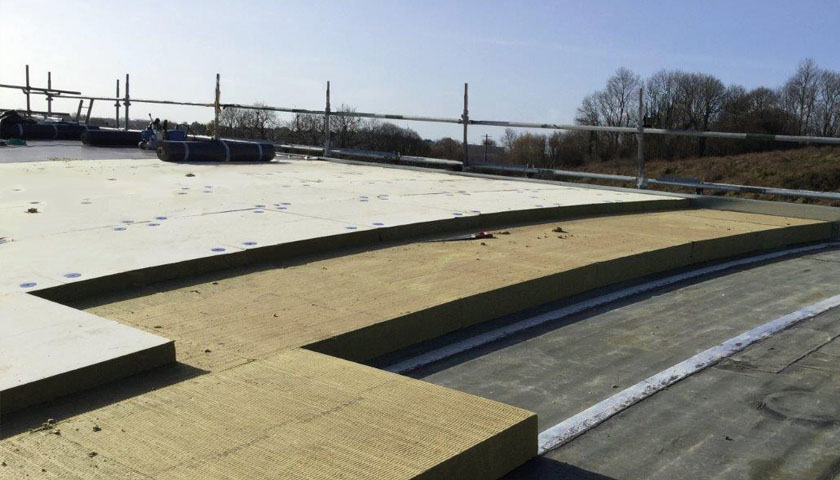BauderROCK insulation within a waterproofing system provides exceptional benefits for airborne sound and rain noise reduction, and sound absorption insulation within a building. This insulation is suitable for all flat roofs utilising single ply or bitumen membranes in a warm roof construction.
Mineral fibre insulation is produced through spinning molten rock to create a mass of fine, intertwined fibres and pressed into boards. The insulation is produced as flat board, trapezoidal infills or tapered to create falls on the roof. The three considerations in acoustic design are airborne sound, rain noise intensity and sound absorption.
Airborne sound
Airborne sound, such as road, rail and air traffic, and surrounding industrial operations, is transferred from a building exterior envelope into the building interior. The BauderROCK mineral wool insulation significantly reduces noise transmission by 47-48dB (235mm-255mm) for noise transmitted through the roof.
Rain noise intensity
Rain noise reduction is a separate consideration, relating to the impact rainfall can have on the indoor noise levels. The BauderROCK predicted Rain Noise Intensity reduction measures between -52.5dB and -52.0dB (235mm and 255mm).
Sound absorption
Reducing noise level from within a building is especially crucial in buildings such as sports halls and manufacturing plants where there is often a great deal of noise generated from inside. BauderROCK Acoustic Infill provides high performance sound absorption when utilised with perforated metal decks. Bespoke infill trapezoidal ‘wedges’ are cut to fit the specified roof deck. The combination of optimised density, fibre direction and excellent fit provides a significant improvement in sound absorption when used together with BauderROCK insulation on perforated metal roof decking constructions.
A BauderROCK system of 235mm offers a U value of 0.15 W/m²K and 255mm a U value of 0.16 W/m²K. By incorporating the air and vapour control layer (AVCL), we are able to deliver a single system that meets both the acoustic and thermal requirements of current building regulations.


